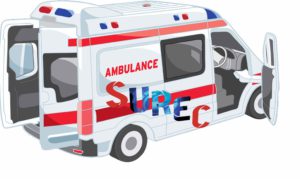Weaknesses in EMS Patients
It is a common complaint among elderly patients and those with chronic diseases that EMS 2023 is weak in Canada’s emergency departments (EDs). To determine the underlying causes, therefore, a comprehensive approach may be necessary.
The term “weakness” refers to a wide range of ambiguous symptoms, such as diminished motor function, fatigue, low energy, dyspnea, or sadness.
Unlike focal neurologic deficits, global weakness is caused by systemic disease rather than a specific lesion within the central or peripheral nervous system.
Although they aren’t usually visible during the acute phase, lesions on the upper motor neurons (UMNs) frequently cause symptoms such as spasticity to extension in the upper extremities, spasticity to flexion in the lower extremities, hyperreflexia, and pronator drift.
Lesions to lower motor neurons (LMNs) generally cause flaccidity, weakened reflexes, fasciculations, or cramping in the muscles.
Epidemiology
Weakness in EMS, a frequent ED symptom, can be caused by a wide range of pathologies that range in severity. Patients may use the phrase “weakness” to represent either focal or systemic issues, and they frequently utilize the term’s more generic definition to convey symptoms like weariness, lethargy, or general malaise that would otherwise be ambiguous or subjective. As a result, both from a diagnostic and therapeutic one, weakness as the primary or accompanying symptom can be exceedingly difficult.
Up to 10% of visits to the ED are for nonspecific weakness, with older people being more likely to complain than younger people. The diagnoses range from cardiovascular, hematologic, neurologic, toxicologic, mental, endocrine, pulmonary, metabolic, and viral causes in over half of these patients.
The initial assessment of the complaint of weakness and the particular assessment of acute neuromuscular weakness are the main topics of the emergency team. The latter might be localized or widespread, and it can come from the neuromuscular junction (NMJ), myofibers, central or peripheral neurons, or both. Further details on the diagnosis and treatment of particular neurologic causes of weakness, such as those involving the brain and cranial nerves (CNs) will explore in this article.
Differentiating Factors in Weakness in EMS
There are several possible diagnoses for widespread weakness. It’s crucial to take into account systemic factors like viral, neurological, toxicologic, metabolic, and physiological causes. The initial phase is to deal with serious systemic illnesses, immediate intervention-required disorders, and potential life threats. A thorough history should clarify the nature, onset, and progression of symptoms, exacerbating or mitigating factors, and variations in severity that may help determine whether the weakness is caused by malignancy, concurrent infection, cardiovascular disease, pulmonary insufficiency, metabolic disturbance, or toxic ingestion of food. When a patient is taking many drugs, drug responses or interactions are crucial factors to take into account. Systems should be thoroughly examined to find any linked symptoms or indicators that might aid in forming a unified diagnosis.
For instance, a system evaluation could identify orthopnea and congestive heart failure symptoms in a tired patient with substantial cardiac disease, persistent blood loss in a patient who is anaemic, or incontinence in an older adult who has a urinary tract infection.
Elderly patients frequently exhibit less regionally specific infection symptoms, such as dysuria or frequency in the case of a potential urinary tract infection, and necessitate a thorough diagnostic strategy that includes laboratory and radiographic tests.
Any abnormalities in the vital signs, such as bradycardia, tachycardia, tachypnea, fever, hypothermia, or hypotension, should be treated as way, and the underlying cause of the weakness should be investigated. A thorough general physical examination that includes skin and mucous membrane evaluation may reveal signs of a systemic illness.

How Cardiovascular Exam Helps to Diagnose Weakness in EMS
A cardiovascular exam can help the doctor determine whether the circulation is adequate. To identify the occasionally subtle presentations of localized central or PNS lesions, a thorough neurologic exam is crucial. The investigation should be expanded to take into account neurological or main muscle explanations for weakness if the history, physical exam, and ancillary testing fail to reveal a systemic cause of weakness. Neurological disorders of the central and periphery are focal causes of weakness. UMN-related conditions commonly manifest as Hoffmann and Babinski symptoms, pronator drift, hyperreflexia, spasticity to extension in the upper limbs, and spasticity to flexion in the lower extremities. UMN symptoms denote a lesion in the brainstem, spinal cord, or corticospinal tract (CST) of the cerebral cortex.
Non Neurologic Weakness
- Changes to plasma volume (dehydration)
- Changes to the plasma’s composition (glucose, electrolytes)
- Alteration of the red blood cells in circulation (anaemia or polycythemia)
- Decreased heart pump performance (myocardial ischemia)
- Systemic vascular resistance is reduced (vasodilatory shock from any cause)
- Higher metabolic demand (local or systemic infection, endocrinopathy, toxin)
- Malfunction of the mitochondria (severe sepsis or toxin-mediated)
- Global central nervous system depression (sedatives, stimulants withdrawal)
CNS Disease and Weakness in EMS
Even though it is not always possible to find these results during the acute phase, their existence indicates CNS disease. When the LMN is dysfunctional, weakness is frequently accompanied by flaccidity, slowed reflexes, fasciculations, or cramping. These findings are caused by lesions in the spinal cord’s anterior horn and its axonal extensions at the nerve root and peripheral nerve.
The Relation Between Weakness and CNS Disease
Although signs of neurological disorders can frequently be treated by a variety of therapies, from medicinal to surgical treatment, diseases in this category cannot be cured. New treatments are also being investigated, giving anti-cancer medicine or additional genetic material to brain areas where their action might help to control or limit the impact of the disease.
To give clinics and EMS facilities comprehensive patient data before patients arrive, we have created a central smart platform (SUREC).







